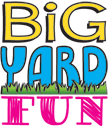When you think of a picture-perfect tree, what comes to mind? A strong, sturdy trunk and robust branches stretching out in every direction, right? Proper tree limb support is crucial for maintaining not only the aesthetic appeal of your trees but also their overall health and structural integrity. In this blog post, we’ll take a deep dive into the world of tree limb support – from understanding why it’s essential to learning how you can provide optimal care for your trees. So grab your favorite beverage, sit back, and let’s explore the fascinating world of arboriculture together!
The Importance of Tree Limb Support
Before we delve into the nitty-gritty details on how to ensure proper limb support for your trees let’s quickly discuss its importance. There are several reasons why supporting tree limbs is crucial:
Safety: Weak or poorly-supported limbs can pose a significant safety hazard, especially during storms and high winds when they’re more likely to break off.
Health: Properly supported limbs receive adequate sunlight and air circulation which promotes overall tree health.
Aesthetics: Unsupported or weak limbs can lead to an unbalanced appearance that detracts from your landscape’s beauty.
Preventing damage: Adequate limb support helps prevent damage both to the tree itself (such as splitting) and surrounding property (due to falling branches).
Now that we know why it’s essential let’s move on to some actionable advice!
Assessing Your Tree’s Health
First things first: before you start working on any kind of tree maintenance project—whether it be pruning or providing additional support—you need to assess the health of your tree(s). Here are some factors you should consider:
- Check if there are any dead or decaying branches present.
- Look for signs of disease or insect infestation.
- Examine the tree trunk for cracks or splits.
If you’re unsure about the health of your trees, it’s always a good idea to consult an arborist who can provide professional guidance.
Pruning: The First Line of Defense
One of the most effective ways to improve tree limb support is through proper pruning. By removing weak, diseased, or crowded branches, you’ll allow the remaining limbs more space and resources to grow stronger.
Here are some general tips for successful pruning:
- Always use clean, sharp tools.
- Remove limbs at their point of attachment to the trunk or another branch rather than in the middle of a branch.
- Cut back to a healthy lateral branch that’s at least one-third the diameter of the removed limb.
- Don’t over-prune; a good rule of thumb is never to remove more than 25% of a tree’s canopy in one season.
Keep in mind that every tree species has specific pruning requirements—some need regular attention while others should be pruned sparingly—so make sure you understand your particular tree’s needs before getting started!
Tree Cabling and Bracing: Providing Extra Support
Sometimes pruning isn’t enough to ensure adequate support for your tree limbs, especially when dealing with large or mature trees with heavy branches. In these cases, cabling and bracing might be necessary as additional forms of structural support.
Tree Cabling
Cabling involves attaching flexible steel cables between two or more limbs (or even multiple trees) so that they share weight loads more evenly and reduce stress on individual branches. Here’s how it works:
- Choose anchor points on both limbs – they should be strong and healthy parts about two-thirds out from the trunk.
- Drill holes into each anchor point (be careful not to hit any other branches).
- Thread galvanized steel cable through each hole and loop it back on itself, securing it with cable clamps.
- Adjust the tension of the cables so that there’s enough slack for natural tree movement but not so much that they’re ineffective at supporting weight.
It’s important to note that cabling should never be attempted without professional guidance or experience; improper installation can cause more harm than good!
Tree Bracing
Bracing is another method of providing additional support to weak or damaged limbs. It involves installing threaded metal rods through the trunk or limbs in key locations where extra reinforcement is needed. Here’s what you need to do:
- Identify areas of weakness (such as cracks, splits, or junctions) that would benefit from bracing.
- Drill holes through these points and insert threaded steel rods coated with a rust-resistant material.
- Secure each rod with washers and nuts tightened on both ends.
Like cabling, bracing should only be carried out by professionals or those with sufficient experience; improper installation can lead to further damage.
Regular Inspection and Maintenance
Once you’ve provided your trees with adequate limb support—whether through pruning, cabling, bracing, or a combination thereof—it’s essential to regularly inspect and maintain them to ensure their continued health and safety.
Here are some tips for ongoing care:
- Routinely check cables and braces for wear or damage; tighten any loosened connections if necessary.
- Keep an eye out for signs of decay around drilled holes, as this can weaken anchor points over time.
- Monitor overall tree health (including checking for pests/disease) – a healthy tree will have stronger limbs!
- Prune appropriately based on your specific tree species’ needs.
Tree Limb Support Conclusion
Proper tree limb support is crucial not only for aesthetic reasons but also to maintain overall health and prevent potential hazards associated with weak branches breaking off during storms or high winds.
By assessing your trees’ health, pruning them appropriately, and providing additional support through cabling or bracing when necessary, you can ensure their longevity and continued beauty for years to come. Just remember that any work involving trees—especially large, mature ones—can be hazardous if not done correctly. When in doubt, consult a professional arborist who can help guide you through the process.
Now go forth and enjoy your sturdy, healthy trees!
